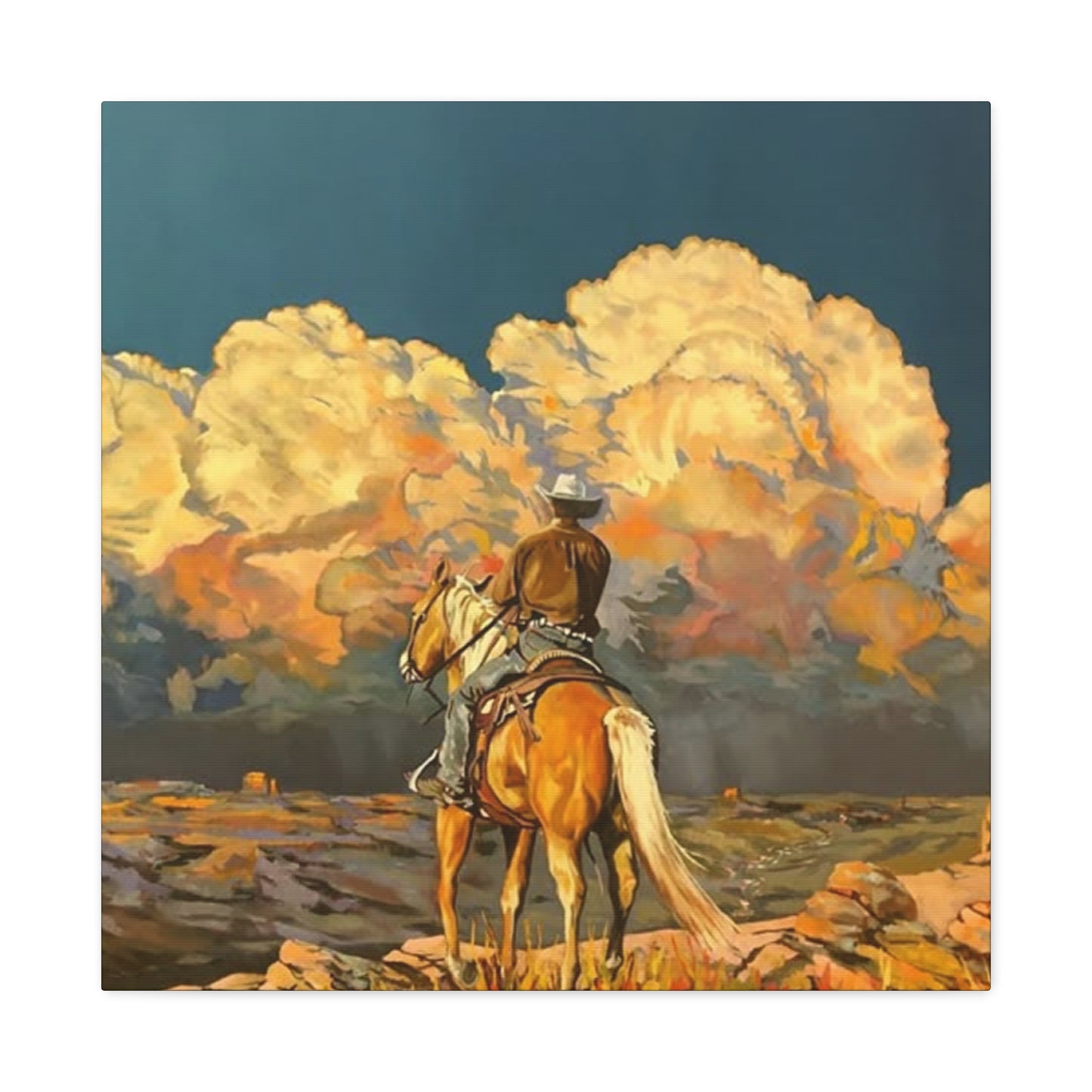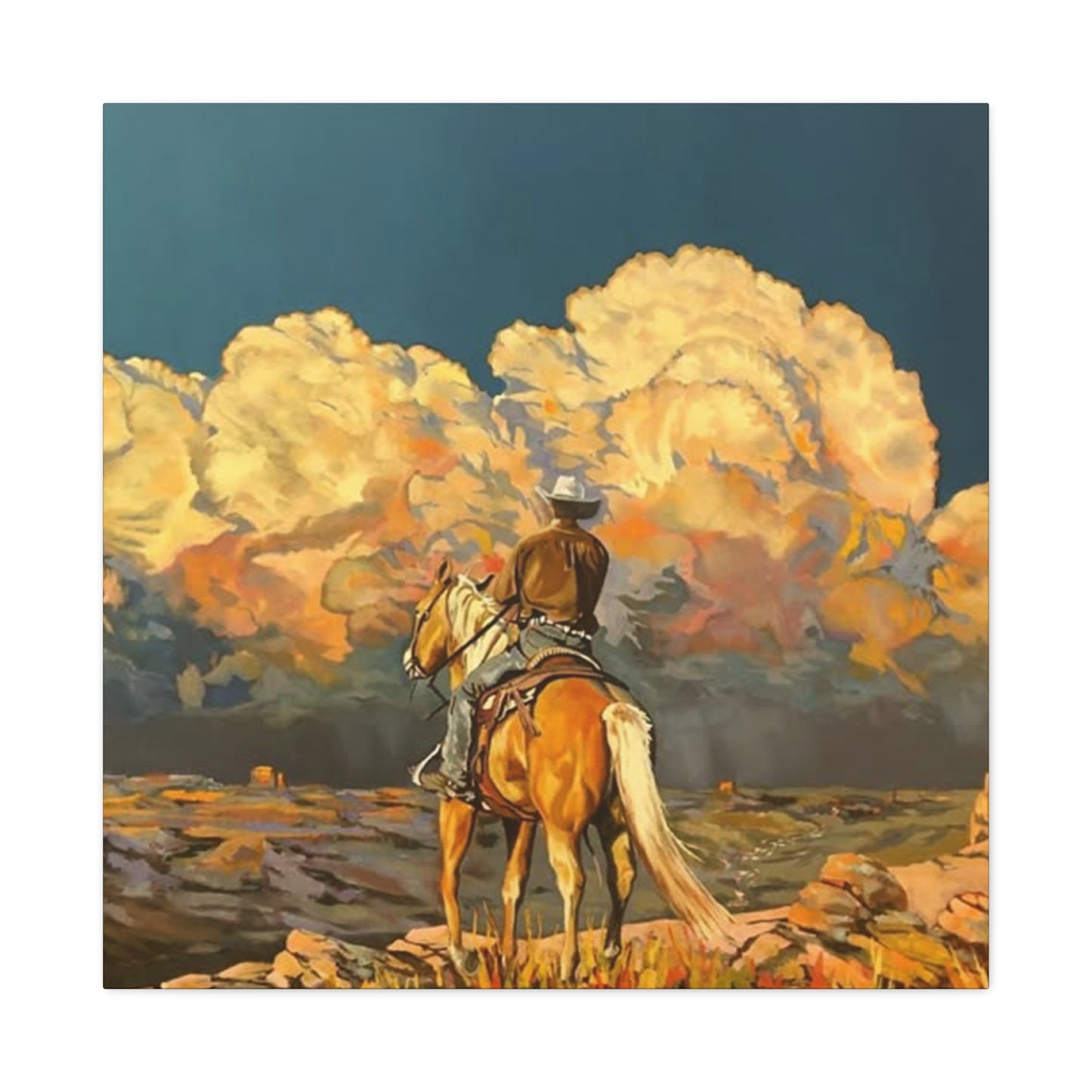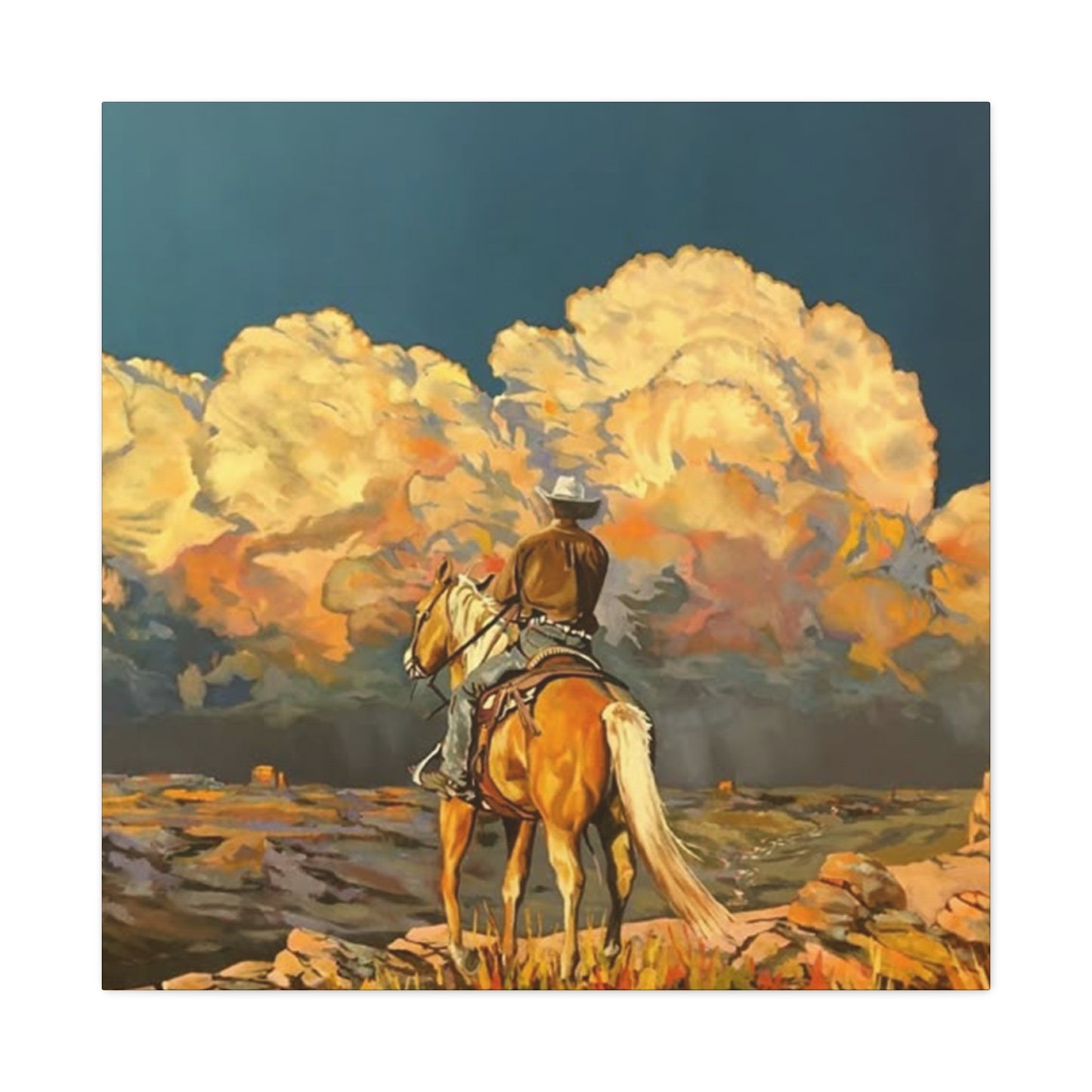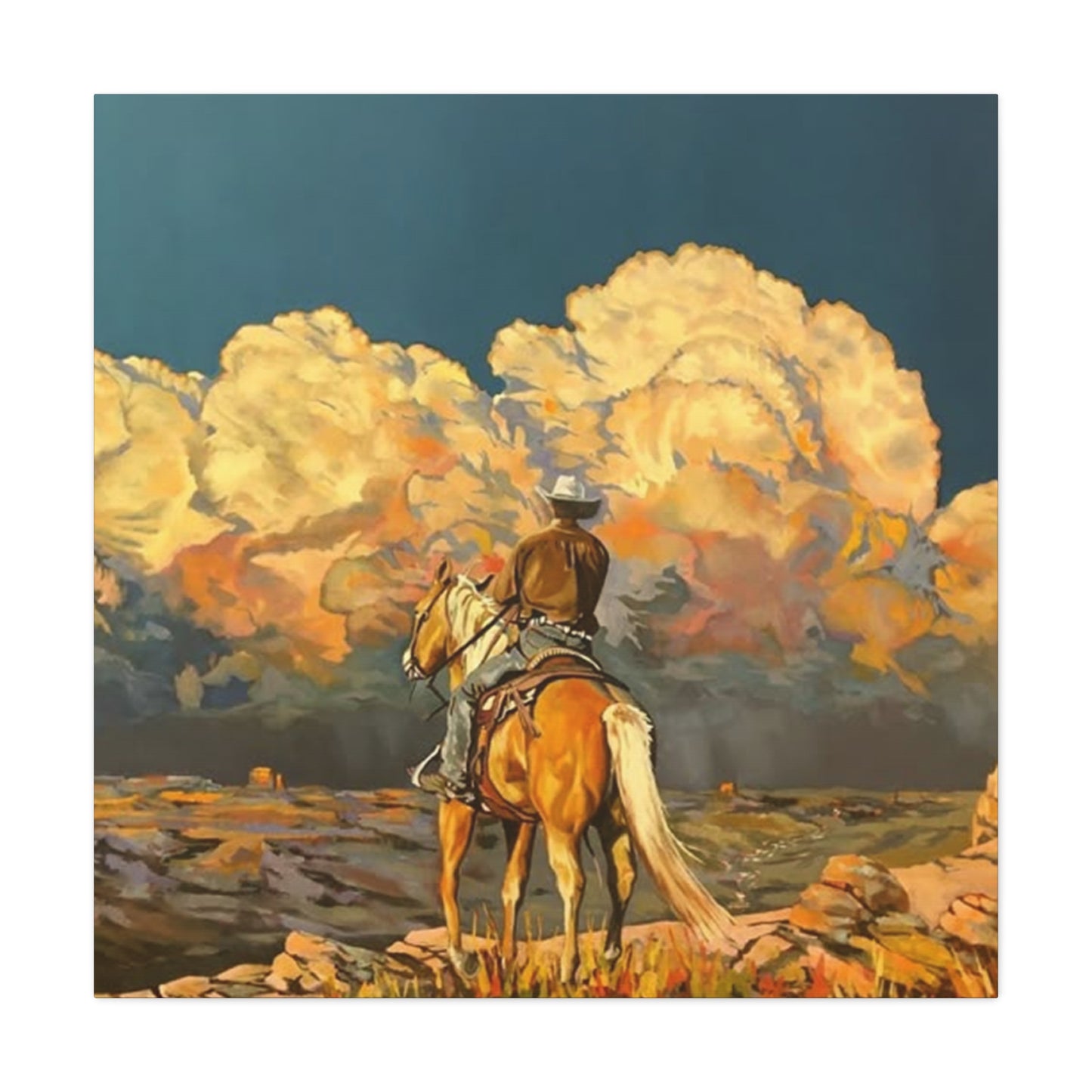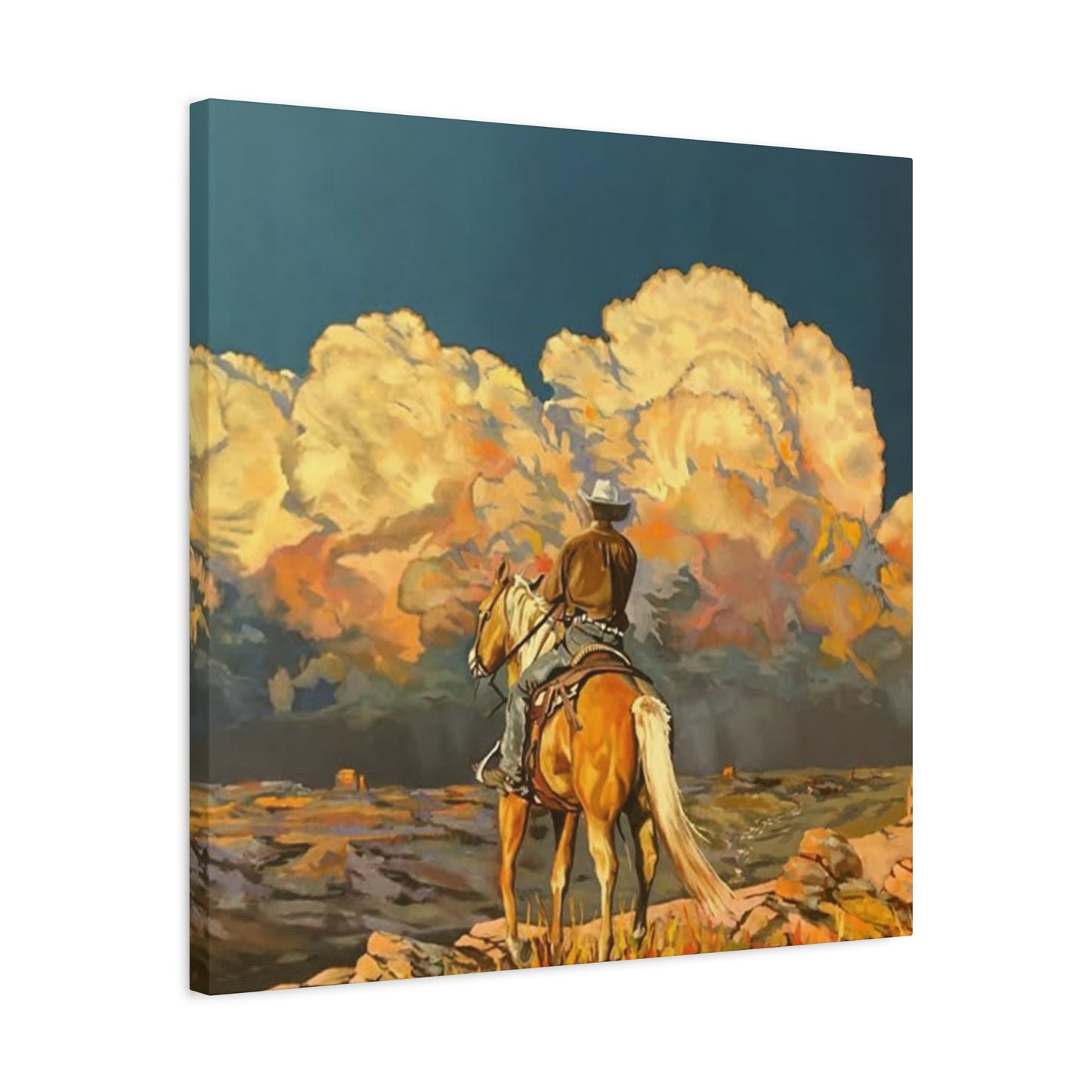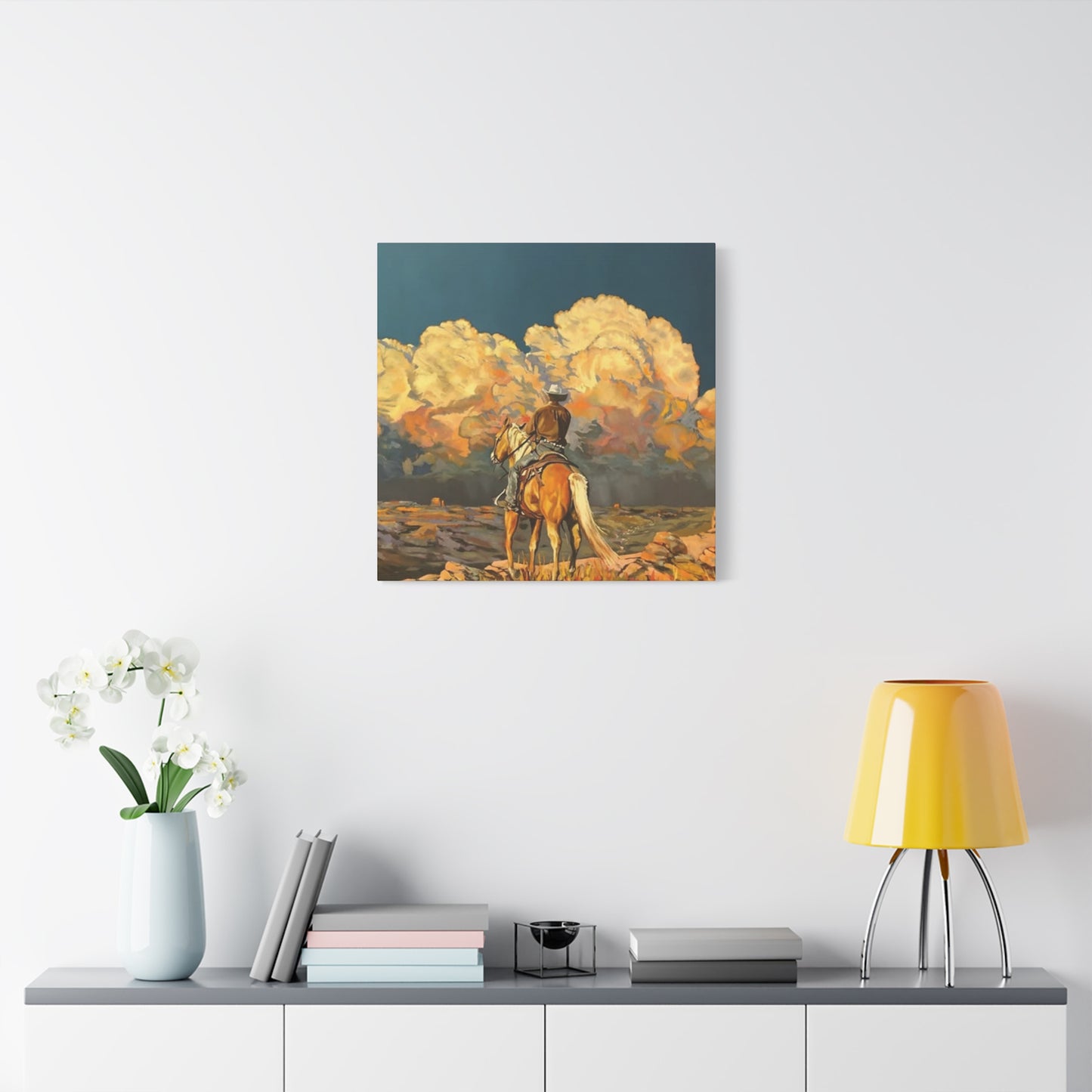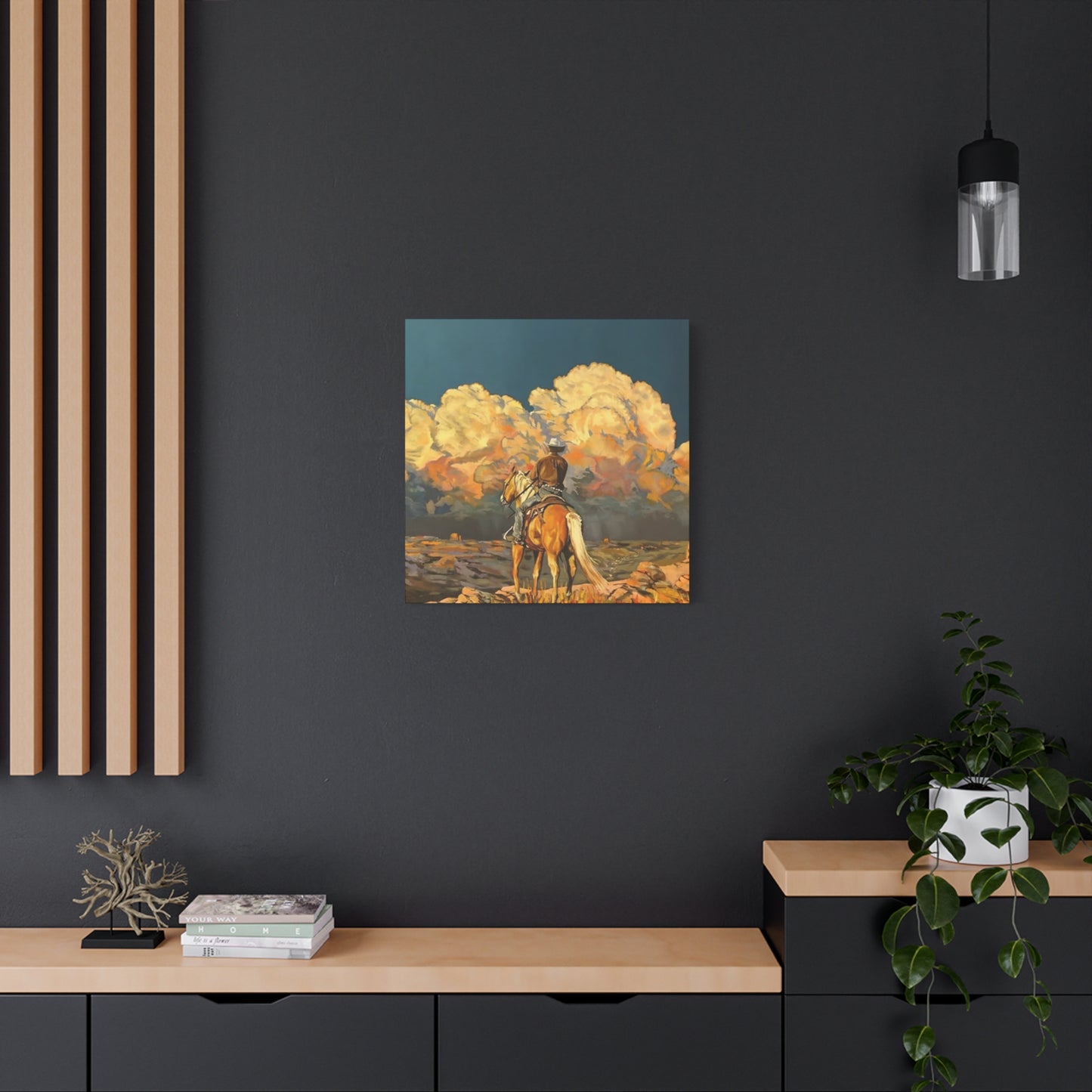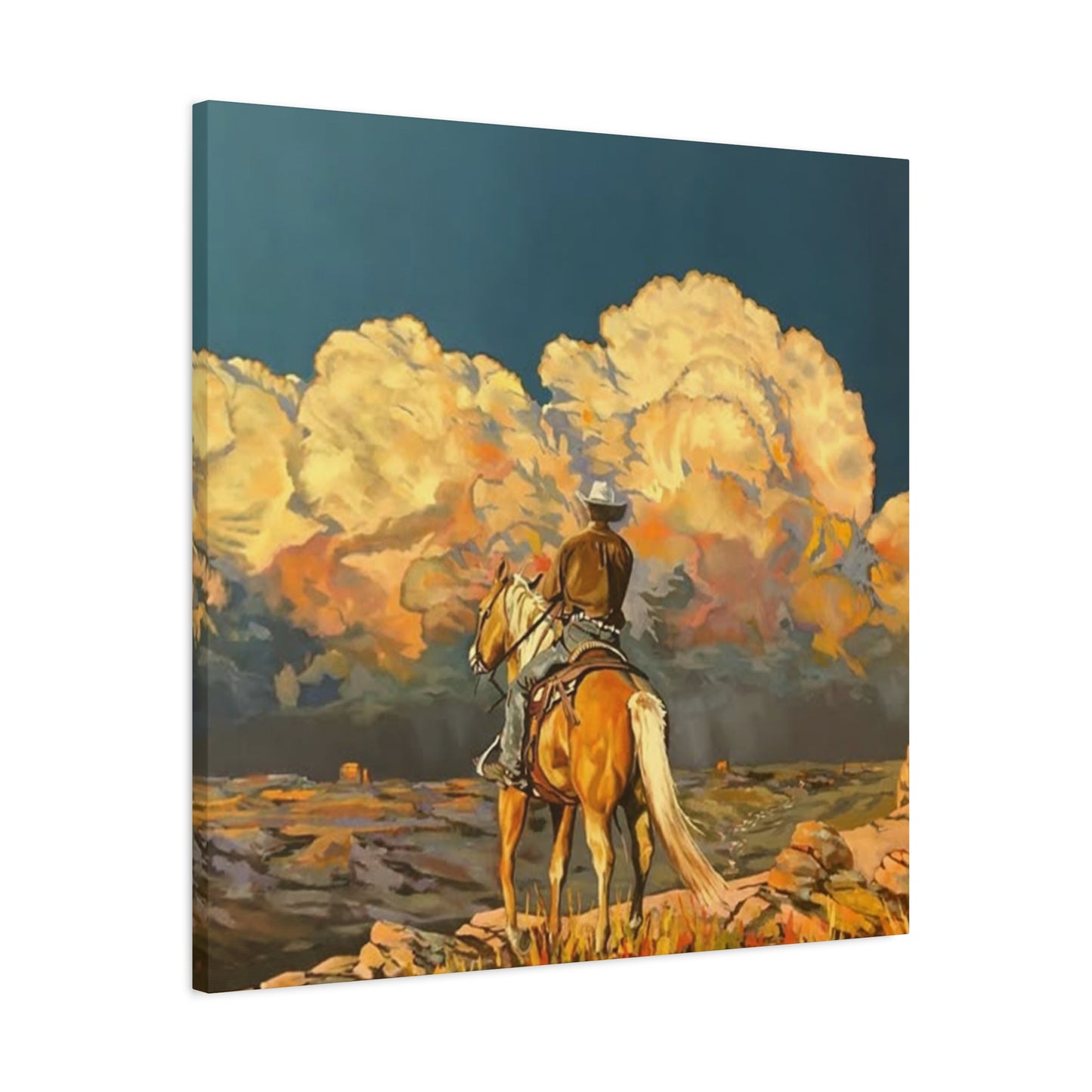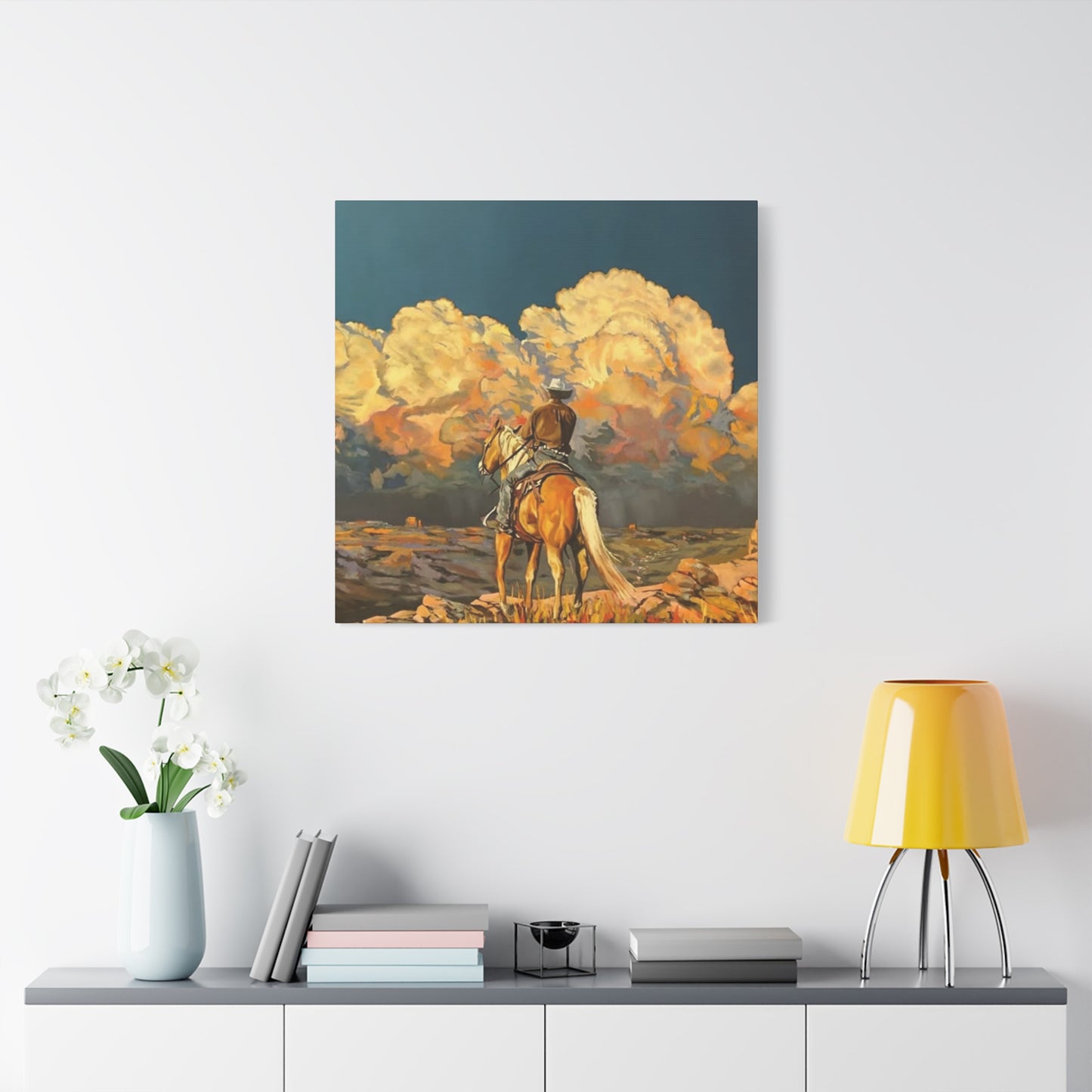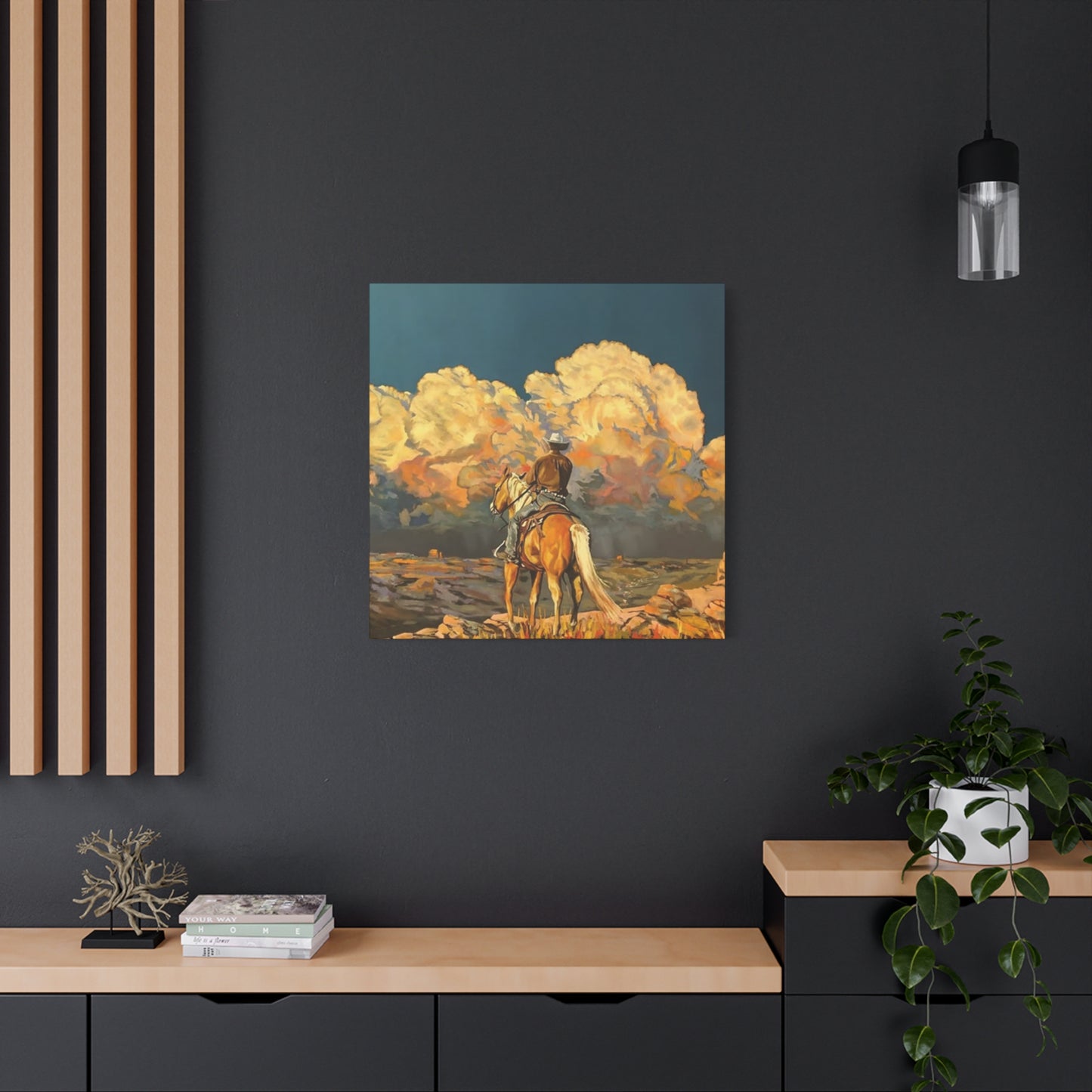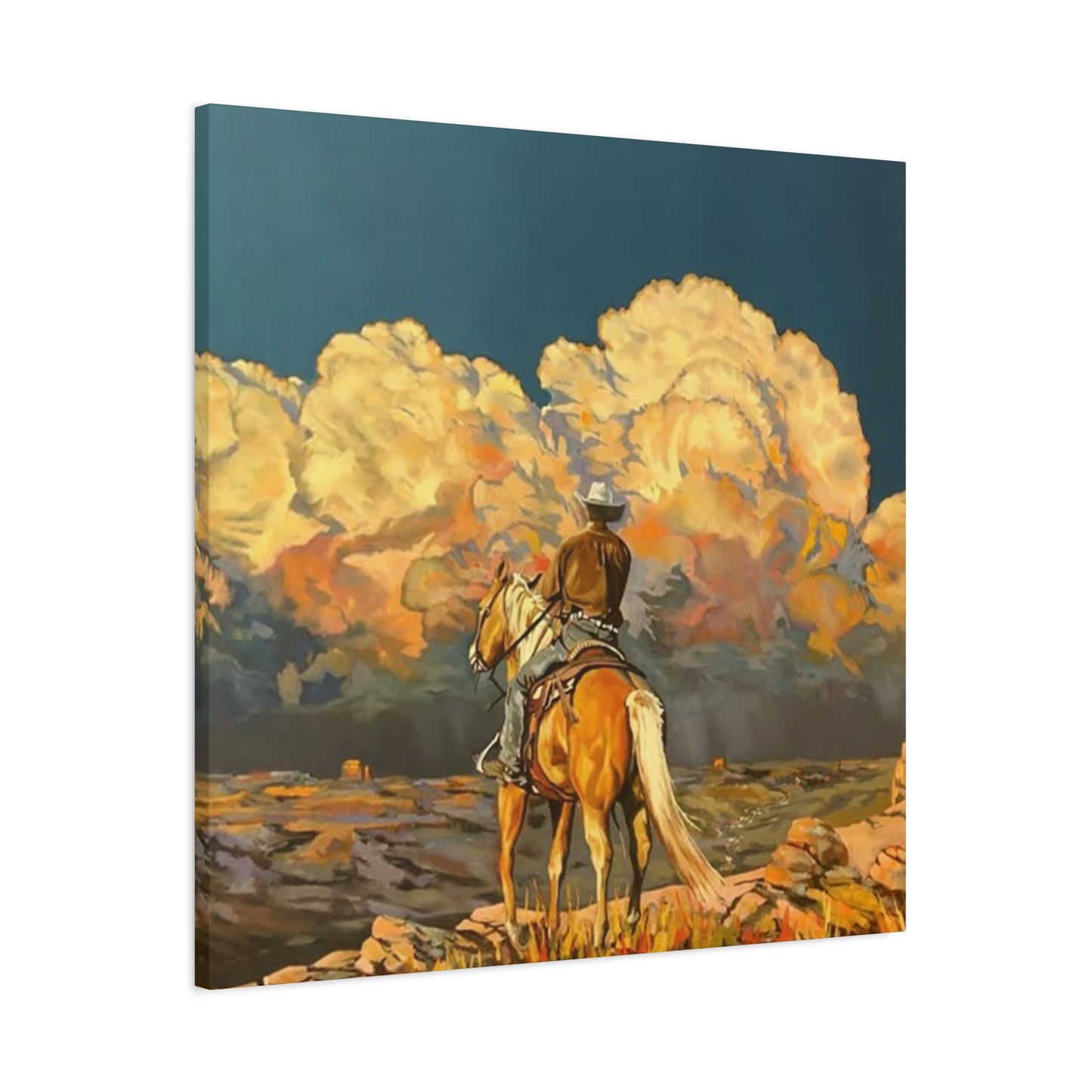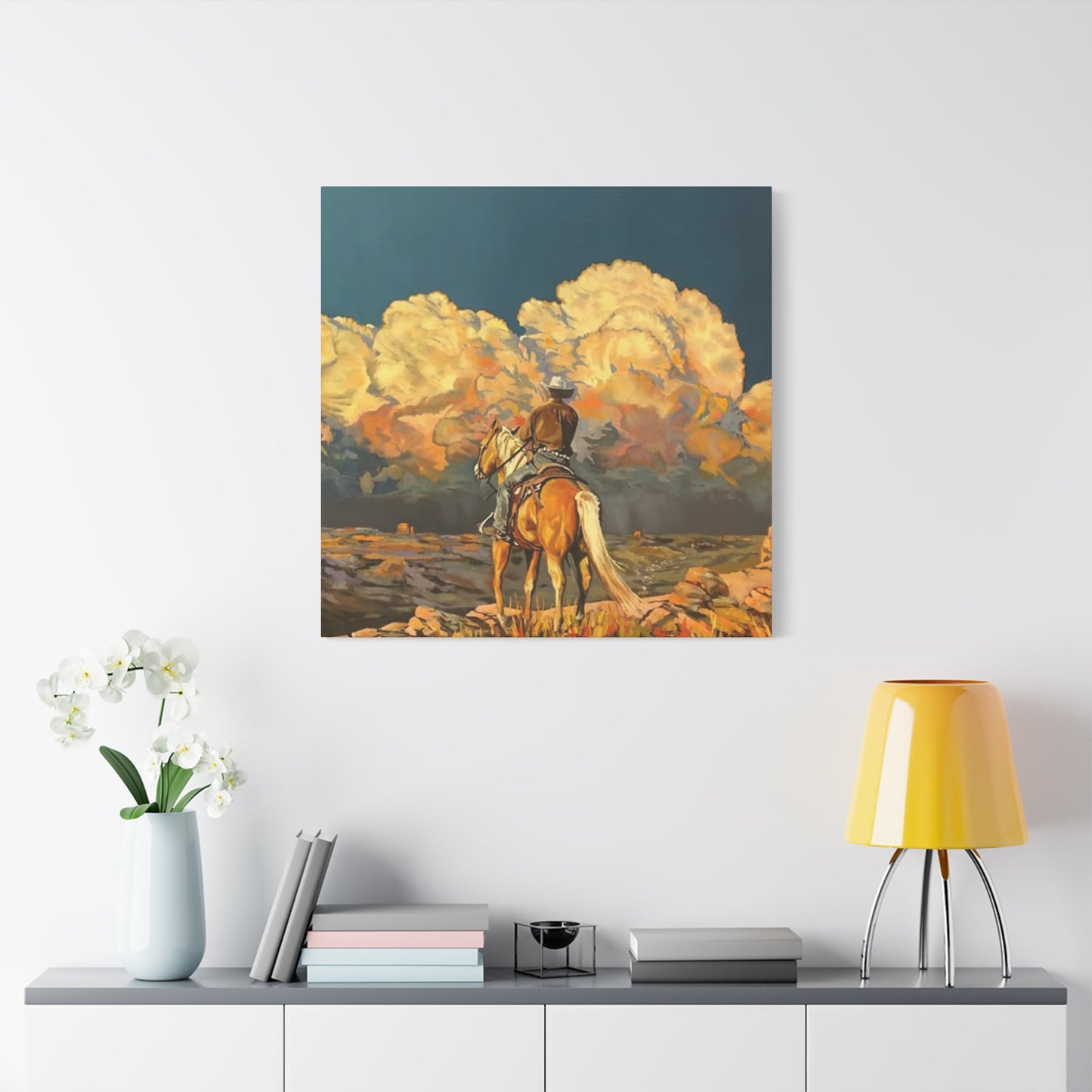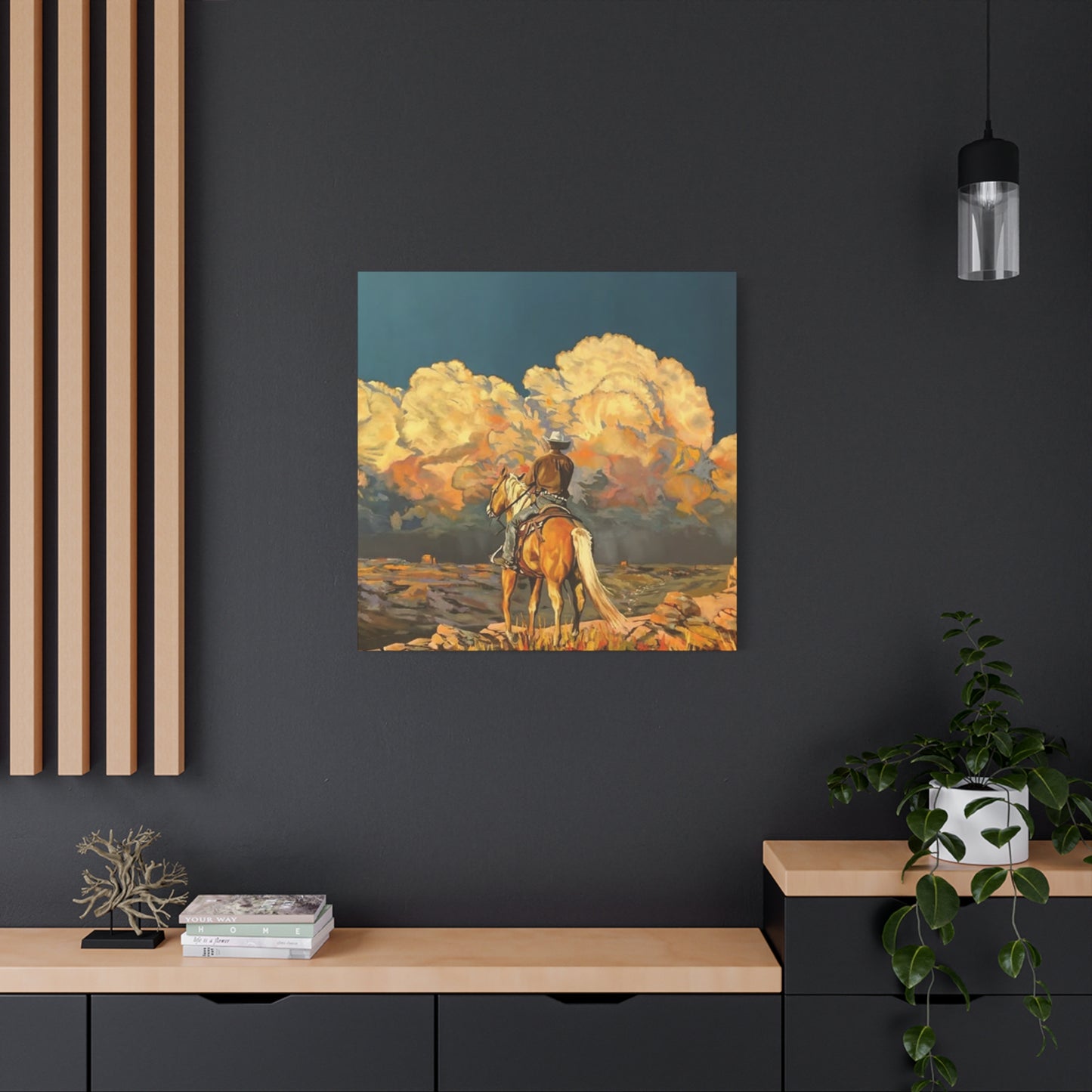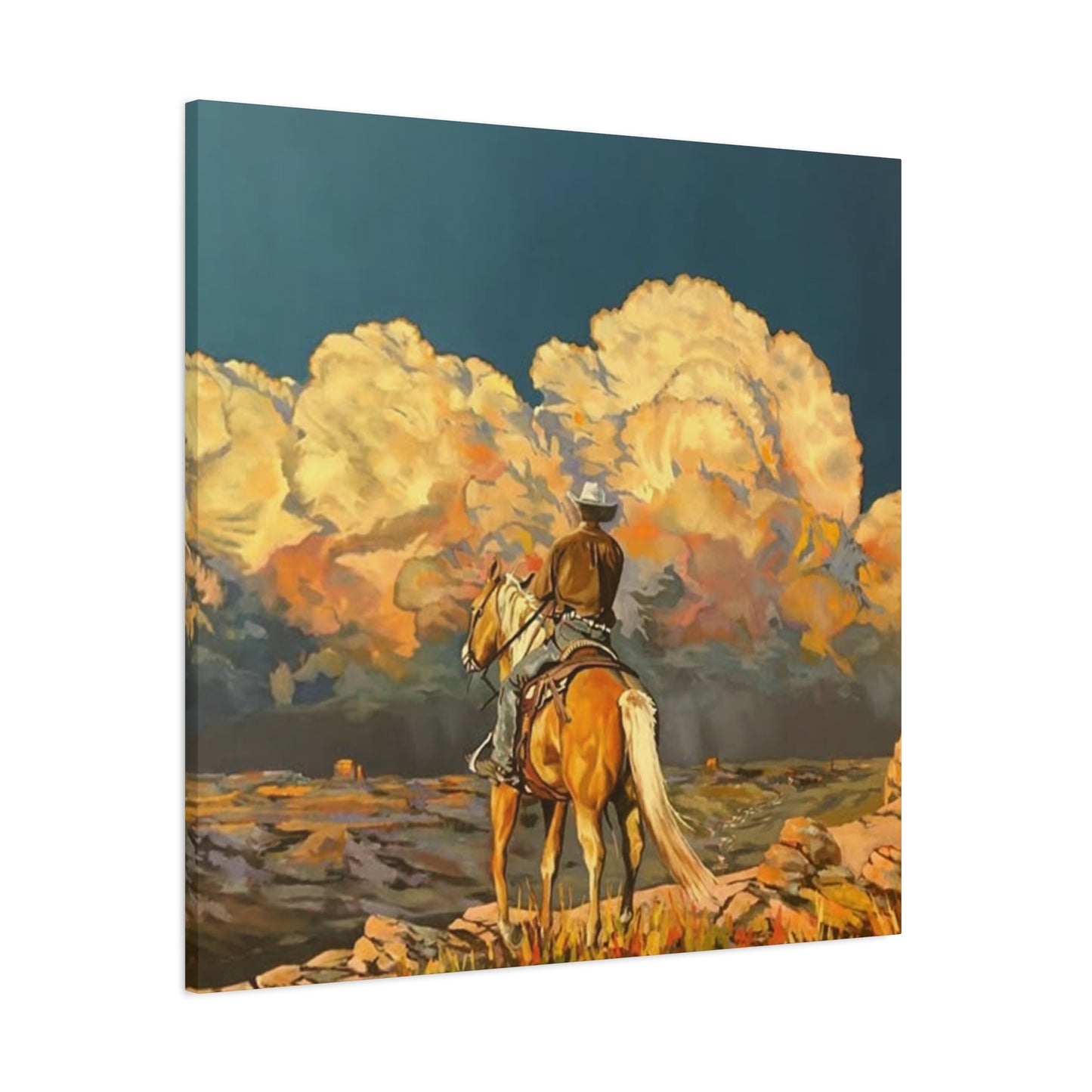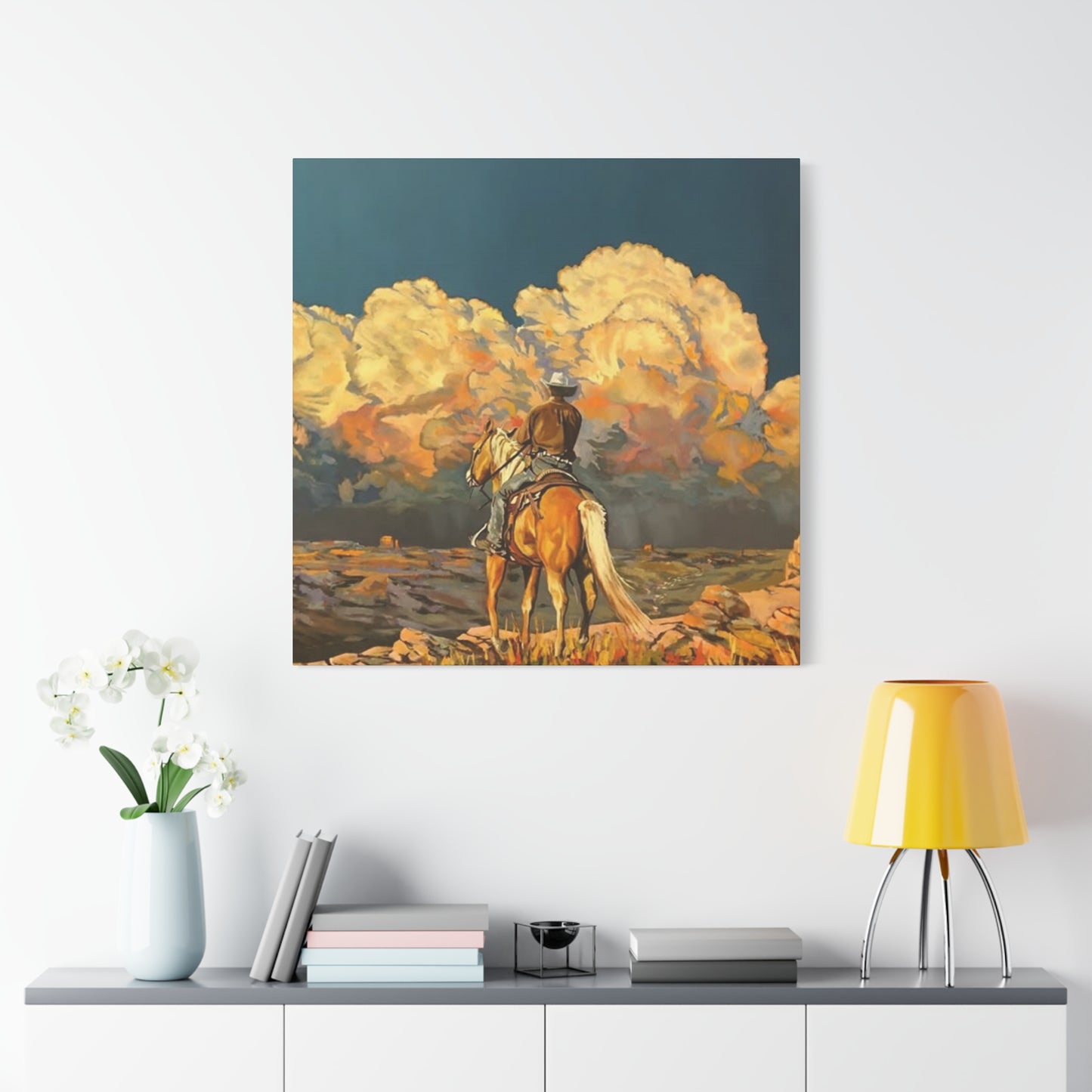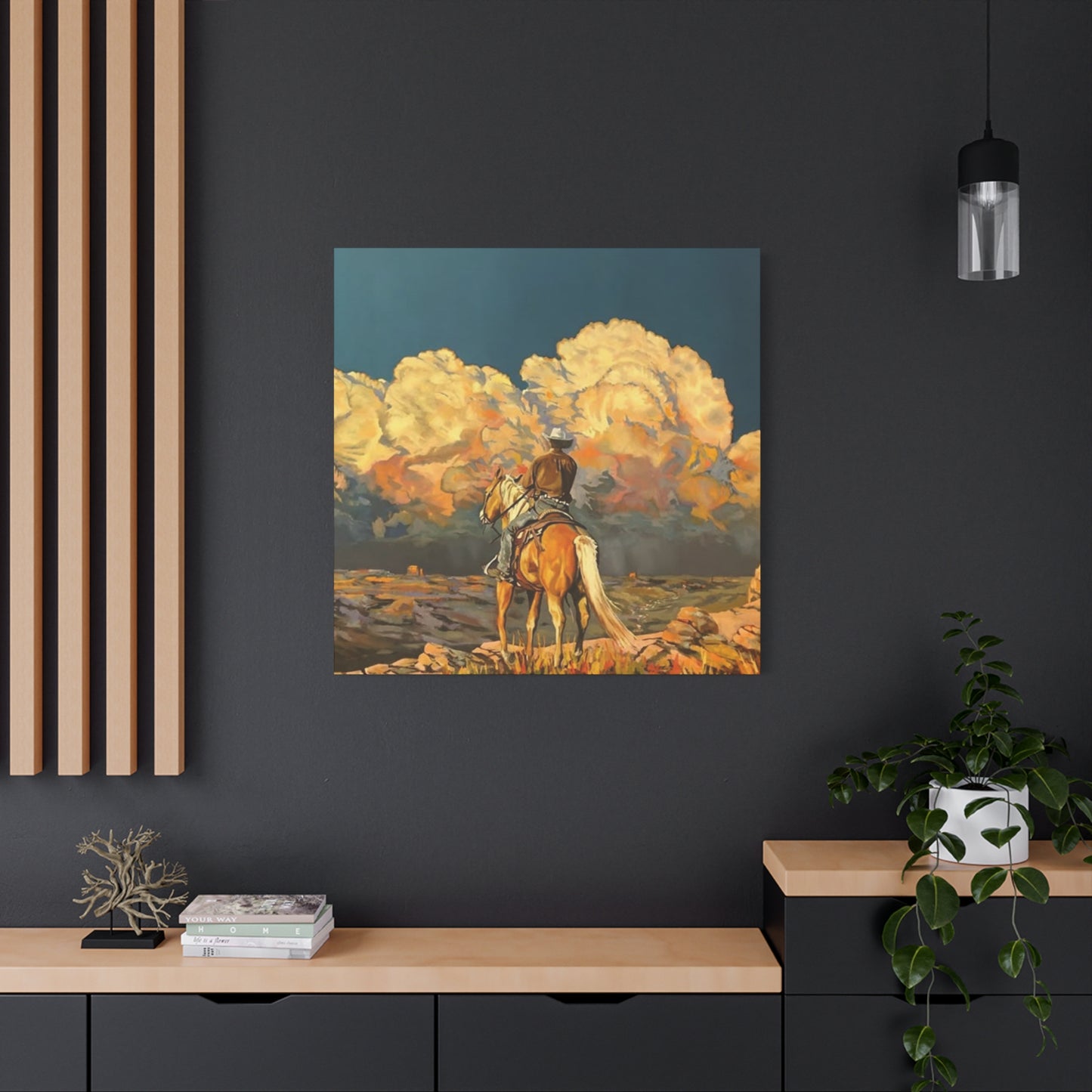Cowboy Southwest Wall Art Canvas Prints: Authentic Western Heritage
The American Southwest stands as the birthplace of legendary cowboy culture, where rugged landscapes shaped generations of cattle ranchers, horsemen, and frontier settlers. This vast region, encompassing Texas, Arizona, New Mexico, Nevada, and parts of Colorado, witnessed the emergence of a distinctive way of life that continues to captivate art enthusiasts worldwide. Canvas prints featuring cowboy themes draw their authenticity from this rich historical foundation, where Spanish vaqueros first introduced cattle herding techniques that evolved into the iconic American cowboy tradition.
During the mid-1800s, enormous cattle drives stretched across hundreds of miles of untamed terrain, creating legendary tales of courage, endurance, and survival. These epic journeys from Texas ranches to northern markets established the cowboy as a symbol of American independence and frontier spirit. Artists today capture these moments through carefully crafted canvas prints that showcase riders navigating treacherous mountain passes, herding livestock across vast plains, and gathering around evening campfires under starlit skies.
The geographical diversity of the Southwest provided cowboys with dramatically different challenges and scenery. From the Sonoran Desert's cacti-studded landscapes to the Rocky Mountain foothills' pine-covered slopes, each region contributed unique visual elements that modern canvas art celebrates. These environmental factors influenced everything from saddle design to clothing choices, creating the distinctive aesthetic that contemporary artists incorporate into their southwestern-themed creations.
Native American influences also played crucial roles in shaping cowboy culture, as indigenous peoples shared knowledge about local wildlife, weather patterns, and survival techniques. This cultural exchange resulted in the adoption of specific tools, riding techniques, and artistic motifs that appear in today's southwestern canvas prints. The blending of Spanish, Mexican, Native American, and Anglo traditions created a unique cultural tapestry that artists continue to explore through various mediums.
Traditional Southwest Art Motifs and Symbolism
Southwest cowboy canvas prints draw extensively from traditional motifs that carry deep cultural significance within the region. The iconic saguaro cactus, found exclusively in the Sonoran Desert, represents resilience and adaptation to harsh conditions. Artists frequently incorporate these towering giants into their compositions, using their distinctive silhouettes to create dramatic contrasts against desert sunsets or storm-filled skies. The presence of saguaros immediately establishes geographical context while symbolizing the enduring spirit of southwestern peoples.
Pueblo pottery patterns, with their geometric designs and earth-tone color palettes, influence many contemporary canvas prints featuring cowboy themes. These ancient motifs, passed down through generations of Native American artisans, represent connections to the land, seasonal cycles, and spiritual beliefs. When incorporated into cowboy art, these patterns create visual bridges between different cultural traditions that coexisted in the Southwest.
The horseshoe, lasso, and branding iron serve as recurring symbols in southwestern cowboy art, each carrying specific meanings related to luck, skill, and ownership. Canvas prints often feature these elements prominently, sometimes as focal points and other times as subtle background details that add authenticity to ranch scenes. The careful placement of such symbols demonstrates the artist's understanding of cowboy culture and enhances the viewer's connection to the depicted lifestyle.
Desert flora beyond cacti also provides rich symbolic content for artists. Yucca plants, with their sword-like leaves and towering white flower spikes, represent protection and purification in many Native American traditions. Palo verde trees, Arizona's state tree, symbolizes desert survival and adaptation. These botanical elements, when combined with cowboy imagery, create compositions that speak to the interconnectedness of human and natural elements in southwestern environments.
Animal symbolism plays equally important roles in traditional Southwest art. The roadrunner, New Mexico's state bird, represents speed and cunning in Native American folklore. Coyotes symbolize adaptability and intelligence, while eagles represent spiritual connection and freedom. Canvas prints featuring cowboys often include these creatures, either as prominent subjects or subtle background elements that enrich the overall narrative.
Color Palettes Inspired by Desert Landscapes
The Southwest's natural color palette provides artists with an extraordinary range of hues that define authentic cowboy canvas prints. Desert sunrises and sunsets create spectacular displays of warm colors, from deep burgundy and orange to golden yellow and soft pink. These natural phenomena serve as inspiration for background treatments in many cowboy-themed artworks, where the dramatic lighting enhances the romantic appeal of frontier life.
Earth tones dominate southwestern color schemes, reflecting the region's geological diversity. Red rock formations, like those found in Sedona and Monument Valley, contribute rich rust and terra cotta hues that artists use for landscape backgrounds and architectural elements. These warm reds create striking contrasts when paired with the cool blues of desert skies or the deep greens of pine trees at higher elevations.
The subtle variations in desert sand colors provide artists with sophisticated neutral palettes that allow other elements to stand out dramatically. From pale cream and beige to deep tan and chocolate brown, these earthy tones create cohesive backgrounds that don't compete with focal subjects like cowboys on horseback or cattle herds. The restraint shown in using these muted colors demonstrates artistic maturity and cultural sensitivity.
Turquoise holds special significance in southwestern color palettes, representing sky, water, and spiritual protection in many Native American traditions. Canvas prints often incorporate this distinctive blue-green hue through jewelry details, architectural elements, or decorative objects within ranch settings. The careful use of turquoise adds authenticity while creating visual interest through its contrast with warmer earth tones.
Purple appears frequently in southwestern landscapes, particularly during twilight hours when distant mountains take on lavender hues. Artists capture these magical moments in canvas prints that show cowboys returning to camp or riding through mountainous terrain during golden hour. The inclusion of these purple tones adds depth and atmospheric perspective to compositions.
Silver and copper tones reflect the Southwest's mining heritage and appear in canvas prints through metallic elements like belt buckles, spurs, bits, and decorative horse tack. These metallic accents catch light and add sparkle to compositions while maintaining historical accuracy in depicting cowboy equipment and accessories.
Contemporary Artists Specializing in Western Themes
Modern artists specializing in southwestern cowboy themes bring fresh perspectives to traditional subjects while maintaining respect for historical accuracy and cultural significance. These contemporary creators combine classical painting techniques with innovative approaches to composition and color, resulting in canvas prints that appeal to both traditional Western art collectors and modern home decorators seeking authentic southwestern aesthetics.
Many successful contemporary Western artists spent significant time in the Southwest, either growing up in the region or relocating there to immerse themselves in the culture and landscape. This firsthand experience shows in their work through accurate depictions of local flora, fauna, geology, and weather patterns. Their intimate knowledge of cowboy lifestyle, gained through relationships with working ranchers and participation in local events, lends authenticity to their artistic interpretations.
The technical skills displayed by leading Western artists often rival those of the Old Masters, with particular attention paid to capturing the effects of desert light on various surfaces. The way sunlight reflects off metal equipment, filters through dust clouds, or illuminates weathered faces requires sophisticated understanding of both artistic technique and environmental conditions. These skills translate beautifully to canvas prints, where high-quality reproduction methods preserve the subtlety of the original paintings.
Contemporary Western artists frequently focus on specific aspects of cowboy culture, developing signature styles that set their work apart in the marketplace. Some specialize in action scenes featuring rodeo events or cattle drives, while others prefer quiet moments showing cowboys at rest or engaged in daily ranch activities. This specialization allows artists to develop deep expertise in their chosen subjects while building recognizable artistic brands.
The business aspects of contemporary Western art have evolved significantly with the growth of online galleries and print-on-demand services. Artists can now reach global audiences through digital platforms, making southwestern cowboy canvas prints available to decorators and collectors worldwide. This expanded reach has encouraged more artists to explore Western themes while maintaining high standards of quality and authenticity.
Many contemporary Western artists also work as illustrators for magazines, books, and advertising campaigns related to ranching, outdoor recreation, and Western lifestyle brands. This commercial work provides steady income while allowing artists to refine their skills and stay current with trends in Western culture and fashion.
Techniques for Creating Authentic Western Atmosphere
Creating authentic western atmosphere in canvas prints requires careful attention to numerous visual elements that work together to transport viewers to the American Southwest. Lighting plays perhaps the most crucial role, as desert environments produce distinctive qualities of illumination that differ dramatically from other geographical regions. The clear, dry air allows sunlight to travel with exceptional clarity, creating sharp shadows and brilliant highlights that artists must capture accurately to achieve believability.
Dust and atmospheric effects provide essential elements for creating realistic western scenes. Cowboys working with cattle inevitably stir up dust clouds that filter and diffuse light while adding movement and energy to compositions. Artists skilled in depicting these atmospheric conditions use various techniques to suggest the presence of airborne particles, from subtle color shifts in distant objects to more obvious dust clouds around active subjects.
The weathered appearance of equipment and clothing tells important stories about the harsh conditions cowboys face daily. Canvas prints that show pristine gear and spotless clothing lack the authenticity that comes from depicting the reality of outdoor work in challenging environments. Skilled artists pay careful attention to wear patterns, fading, and damage that accumulate over time, using these details to add credibility to their depictions.
Proper scale relationships between figures, animals, and landscape elements help establish the vastness of southwestern environments. Cowboys on horseback should appear appropriately small when depicted against expansive desert vistas or towering rock formations. This sense of scale emphasizes both the grandeur of the landscape and the courage required to work in such imposing surroundings.
The inclusion of period-appropriate details demonstrates the artist's research and commitment to historical accuracy. Saddle styles, clothing cuts, equipment designs, and architectural features all evolved over time, and successful western artists ensure their depictions match the intended time period. This attention to historical detail enhances the educational value of canvas prints while increasing their appeal to knowledgeable collectors.
Weather conditions provide opportunities to add drama and interest to western scenes. Approaching thunderstorms, with their distinctive cloud formations and lighting effects, create tension and movement in compositions. Similarly, the aftermath of storms, with its clear air and enhanced colors, offers different emotional qualities that artists can exploit for maximum visual impact.
Selecting Canvas Sizes for Different Room Types
Choosing appropriate canvas sizes for southwestern cowboy art requires consideration of both the intended room's dimensions and the viewing experience desired by the homeowner. Large-format prints work exceptionally well in spacious areas like living rooms, family rooms, and entryways, where they can serve as dramatic focal points that establish the overall decorative theme. These substantial pieces, typically measuring 36 inches or larger in at least one dimension, command attention and create immersive experiences that transport viewers into the depicted scenes.
Medium-sized canvas prints, ranging from 20 to 35 inches in their largest dimension, offer versatility for various room types and can work effectively as either primary focal points in smaller areas or as complementary pieces in larger rooms. These dimensions work particularly well in dining rooms, bedrooms, and home offices, where they provide visual interest without overwhelming the available space or competing with furniture and other decorative elements.
Smaller canvas prints, under 20 inches in their largest dimension, excel in intimate settings like powder rooms, hallways, and reading nooks. These pieces can also work effectively when arranged in groups or series, creating gallery walls that tell cohesive stories about cowboy life or southwestern landscapes. The smaller scale allows for closer viewing of fine details and subtle artistic techniques that might be lost in larger formats.
Horizontal orientations work well for landscape-focused compositions that emphasize the expansive nature of southwestern terrain. These wide formats suit rooms with similarly horizontal emphasis, such as those with long, low furniture arrangements or extensive window walls. The horizontal format naturally draws the eye across the composition, creating a sense of movement and journey that complements cowboy themes.
Vertical orientations prove effective for portraits of individual cowboys or horses, as well as for architectural subjects like pueblo buildings or rock formations. Tall, narrow canvases work well in hallways, alongside staircases, or in rooms with high ceilings where vertical emphasis enhances the architectural features. The vertical format also works well for creating series of related images that can be hung in sequence.
Square formats offer balanced compositions that work well in various settings and can be particularly effective when multiple pieces are arranged together. The equal dimensions create stable, centered compositions that work well for close-up subjects or carefully balanced landscape scenes. Square canvases integrate well with modern decorative schemes while maintaining the authentic appeal of traditional western subjects.
Framing Options and Presentation Styles
The framing choices for southwestern cowboy canvas prints significantly impact their visual presentation and integration with existing home decor. Traditional wooden frames, particularly those featuring rustic finishes like distressed pine, weathered oak, or reclaimed barn wood, enhance the authentic western atmosphere while providing appropriate borders that don't distract from the artwork itself. These natural wood tones complement the earth-based color palettes common in southwestern art while adding textural interest to wall displays.
Ornate western-style frames, featuring carved details like rope patterns, horseshoes, or Native American motifs, can enhance themed rooms but require careful consideration to avoid overwhelming subtle artistic details. These decorative frames work best with bold, high-contrast images that can hold their own against elaborate borders. The key lies in matching the frame's visual weight to that of the artwork itself.
Metal frames, particularly those in bronze, copper, or wrought iron finishes, reflect the Southwest's mining heritage while providing clean, modern presentation options. These frames work well in contemporary homes where residents want to incorporate western themes without creating overly rustic atmospheres. The metallic finishes also complement the silver and copper accents often found in authentic western equipment and jewelry.
Gallery-style presentation, where canvas prints are mounted without visible frames, creates clean, modern displays that focus attention entirely on the artwork. This approach works particularly well with high-quality canvas prints that feature gallery-wrapped edges, where the image continues around the sides of the stretched canvas. The frameless presentation suits contemporary decorating styles while allowing the western subject matter to speak for itself.
Float mounting, where framed canvases appear to hover within their frames, creates sophisticated presentations that work well in formal settings. This technique adds depth and dimension to the display while maintaining focus on the artwork. Float mounting works particularly well with smaller pieces or when creating gallery wall arrangements with multiple related images.
Custom matting options allow for creative presentation approaches that can enhance specific aspects of the artwork. Mats in complementary colors can draw attention to particular elements within the composition, while neutral mats provide subtle borders that enhance the overall presentation without competing with the image. Multiple mat layers create additional depth and richness in the overall presentation.
Placement Strategies for Maximum Visual Impact
Strategic placement of southwestern cowboy canvas prints requires careful consideration of lighting conditions, viewing angles, and relationship to other room elements. Natural light from windows can enhance the warm colors common in western art, but direct sunlight should be avoided to prevent fading and damage to the canvas and inks. North-facing windows provide excellent consistent lighting throughout the day, while east and west windows offer changing light qualities that can create different moods as the day progresses.
Eye-level placement ensures comfortable viewing for most observers, with the center of the artwork positioned approximately 57 to 60 inches from the floor. This standard height works well for most situations but may require adjustment based on ceiling heights, furniture arrangements, and the primary viewing positions within the room. In dining areas, where viewers are often seated, slightly lower placement may prove more appropriate.
Creating focal points through strategic placement draws attention to featured artworks while establishing visual hierarchy within the room. Large, dramatic pieces work well as primary focal points on main walls, while smaller complementary pieces can provide secondary points of interest. The key lies in avoiding visual competition between multiple strong pieces while maintaining overall balance and harmony.
Grouping strategies allow for creative arrangements that tell cohesive stories or explore related themes. Series of prints depicting different aspects of cowboy life can be arranged chronologically or thematically, creating narrative sequences that engage viewers over time. Consistent spacing between grouped pieces, typically 2 to 4 inches, creates unified presentations while allowing each individual work to maintain its identity.
Architectural features like fireplaces, built-in shelving, or distinctive wall materials provide natural frameworks for artwork placement. Southwestern cowboy prints work particularly well above fireplaces, where the warmth and gathering nature of the hearth complements the communal aspects of cowboy culture. Stone or brick surrounds provide textural contrasts that enhance the rustic appeal of western themes.
Furniture relationships require careful consideration to ensure artwork complements rather than competes with other room elements. Canvas prints hung above sofas or beds should relate proportionally to the furniture below, typically covering 50 to 75 percent of the furniture's width. The space between furniture and artwork, usually 6 to 12 inches, should allow the pieces to relate without creating cramped or disconnected appearances.
Color Coordination with Existing Home Decor
Integrating southwestern cowboy canvas prints with existing home decor requires thoughtful consideration of color relationships and overall aesthetic harmony. The warm earth tones characteristic of western art naturally complement many existing color schemes, particularly those featuring neutral backgrounds and natural material finishes. Understanding how to identify and emphasize these connections helps homeowners successfully incorporate authentic western elements without disrupting their established decorative themes.
Monochromatic color schemes, built around variations of single hues, can effectively showcase western art while maintaining sophisticated appearances. Rooms decorated primarily in browns, tans, or other earth tones provide natural settings for cowboy-themed canvas prints, where the artwork's colors blend seamlessly with the surrounding palette. This approach creates cohesive, calming environments that emphasize the peaceful aspects of southwestern landscapes.
Complementary color relationships, utilizing hues opposite each other on the color wheel, create dynamic presentations that energize rooms while highlighting specific elements within the artwork. The warm oranges and reds common in desert sunset scenes pair beautifully with cool blues in contemporary decor, creating vibrant contrasts that bring life to neutral backgrounds. These bold combinations work particularly well in active areas like family rooms and kitchens.
Analogous color schemes, featuring adjacent hues on the color wheel, create harmonious presentations that feel natural and comfortable. The progression from yellow through orange to red, common in southwestern landscapes, works beautifully with existing decor in similar warm tones. This approach creates subtle, sophisticated color flow that enhances both the artwork and the surrounding environment.
Neutral backgrounds allow southwestern art to take center stage while providing flexibility for future decorative changes. Rooms with white, cream, or pale gray walls showcase the rich colors in cowboy canvas prints without creating visual competition. This approach works particularly well in homes where residents want to experiment with western themes without making permanent commitments to southwestern decorating styles.
Accent color strategies use southwestern art to introduce specific hues that are repeated in smaller quantities throughout the room via accessories, throw pillows, or decorative objects. This technique creates visual coherence while allowing the artwork to influence the overall color story without overwhelming the existing decor. The key lies in selecting prints that contain accent colors already present in the room's furnishings or accessories.
Lighting Considerations for Western Art Display
Proper lighting dramatically enhances the visual impact of southwestern cowboy canvas prints while protecting them from damage caused by excessive exposure to harmful light rays. The warm colors and subtle details common in western art require carefully planned illumination that brings out the richness of desert landscapes and the authenticity of period details without creating glare or reflections that interfere with viewing pleasure.
Track lighting systems provide flexible solutions that allow for precise positioning and angle adjustment to accommodate different artwork sizes and placement locations. Individual fixtures can be directed specifically at each piece, with dimmer controls allowing for adjustment based on ambient lighting conditions and desired mood. LED track lights offer energy efficiency and reduced heat output, making them ideal for protecting valuable canvas prints from thermal damage.
Picture lights, mounted directly above or below individual artworks, create focused illumination that emphasizes specific pieces while adding architectural interest to wall displays. These fixtures work particularly well with larger canvas prints that serve as focal points, providing both functional and decorative benefits. Battery-powered LED picture lights eliminate the need for electrical work while offering flexibility in placement and easy relocation when room arrangements change.
Recessed ceiling fixtures can provide general illumination that showcases western art without creating the harsh shadows or hot spots associated with direct lighting. When properly positioned and equipped with appropriate beam spreads, recessed lights create even illumination that reveals the full color range and detail present in high-quality canvas prints. Adjustable trim rings allow for fine-tuning of light direction and coverage.
Natural light management requires careful attention to window treatments and seasonal variations in sun angles. UV-filtering window films or specialized glass can protect artwork from harmful rays while maintaining the benefits of natural illumination. Adjustable window coverings allow homeowners to control light levels throughout the day, preventing overexposure during peak sunlight hours while maximizing viewing pleasure during optimal lighting conditions.
Accent lighting from table lamps, floor lamps, or wall sconces can provide supplementary illumination that enhances the viewing experience without creating primary lighting responsibilities. These secondary light sources work particularly well in evening hours when natural light fades but viewers still want to enjoy their western art collections. Warm light temperatures complement the earth tones in southwestern art while creating cozy, inviting atmospheres.
Maintenance and Care for Canvas Prints
Proper maintenance and care extend the life and preserve the visual quality of southwestern cowboy canvas prints, ensuring these investments continue to enhance home environments for years to come. Regular dusting using soft, lint-free cloths or professional art cleaning brushes removes accumulated particles that can dull colors and create surface texture problems. The gentle circular motions should follow the grain of the canvas when possible, avoiding excessive pressure that might damage the print surface or underlying canvas material.
Humidity control plays a crucial role in canvas print preservation, as excessive moisture can cause stretching, warping, or mold growth, while overly dry conditions may lead to cracking or brittleness. Maintaining relative humidity levels between 45 and 55 percent provides optimal conditions for canvas stability while preventing most moisture-related problems. Humidifiers or dehumidifiers may be necessary in extreme climates to achieve and maintain appropriate levels.
Temperature stability prevents expansion and contraction cycles that can stress canvas materials and cause premature aging or damage. Avoiding placement near heating vents, fireplaces, or air conditioning outlets reduces temperature fluctuations while providing more consistent environmental conditions. Sudden temperature changes should be avoided, particularly when moving pieces between different environments or during seasonal climate transitions.
UV protection becomes essential for preserving the vibrant colors characteristic of southwestern art, as ultraviolet radiation causes fading and color shifts over time. UV-filtering glazing, window treatments, or museum-quality protective coatings can significantly reduce harmful radiation exposure while maintaining visual clarity. Regular monitoring for early signs of fading allows for prompt intervention before damage becomes irreversible.
Professional cleaning services may be necessary for valuable pieces or when home cleaning efforts prove insufficient. Certified art conservators have specialized equipment and expertise to safely clean canvas prints without causing damage, while also identifying potential problems before they become serious. Professional services also provide documentation and advice for long-term preservation strategies.
Storage considerations become important when rotating displays or protecting pieces during home renovations or relocations. Flat storage in acid-free materials protects canvas prints from moisture, dust, and physical damage while preventing warping or creasing. Climate-controlled storage facilities provide optimal conditions for valuable pieces during extended storage periods.
Incorporating Native American Influences
Native American artistic traditions provide rich sources of inspiration for southwestern cowboy canvas prints, reflecting the historical interactions between indigenous peoples and frontier settlers throughout the American Southwest. These cultural exchanges resulted in shared techniques, motifs, and perspectives that contemporary artists continue to explore through respectful interpretation and authentic representation. Understanding these influences enhances appreciation for the complexity and depth of southwestern artistic traditions.
Traditional pottery patterns, with their geometric precision and symbolic meanings, appear frequently in canvas prints as background elements or decorative details within ranch settings. These designs, passed down through generations of Pueblo peoples, represent connections to natural cycles, spiritual beliefs, and community traditions. When incorporated respectfully into cowboy art, these patterns create visual bridges between different cultural traditions that coexisted in the Southwest.
Textile patterns from Navajo weaving traditions contribute distinctive motifs and color combinations that enrich southwestern art. The bold geometric designs and natural dye colors used in traditional blankets and rugs provide authentic color palettes and compositional elements for contemporary artists. These influences appear in canvas prints through clothing details, saddle blankets, or architectural elements that reflect the material culture of the historic Southwest.
Jewelry designs, particularly those featuring turquoise and silver, reflect the sophisticated metalworking skills developed by Native American artisans. Canvas prints often include these decorative elements as authentic details that enhance the historical accuracy of depicted cowboys and their equipment. The distinctive techniques and aesthetic principles of Native American jewelry making contribute to the overall authenticity of southwestern art.
Spiritual symbolism from various tribal traditions appears in southwestern art through careful incorporation of meaningful elements like eagle feathers, medicine wheels, or directional symbols. Artists who include these elements typically research their significance and consult with cultural authorities to ensure respectful representation. This attention to cultural sensitivity demonstrates respect for living traditions while acknowledging their contributions to southwestern artistic heritage.
Archaeological influences from ancient Southwestern cultures like the Ancestral Puebloans (formerly known as Anasazi) contribute architectural elements and artistic motifs that appear in contemporary canvas prints. Cliff dwellings, petroglyphs, and pottery shards provide historical context that enriches modern interpretations of southwestern landscapes and cultural interactions.
Regional Variations in Southwest Style
The American Southwest encompasses diverse geographical and cultural regions, each contributing distinctive elements to the overall tradition of cowboy art and southwestern aesthetics. Understanding these regional variations helps art enthusiasts and collectors appreciate the nuances that distinguish authentic southwestern canvas prints from generic western art while recognizing the specific cultural and environmental influences that shaped different areas.
Texas cowboy culture developed its own characteristics based on the vast grasslands and cattle ranching operations that dominated the state's economy and identity. Canvas prints reflecting Texas influences often emphasize wide-open prairies, massive cattle herds, and the distinctive gear associated with working large ranches. The famous Texas longhorn cattle, with their impressive horn spans and hardy constitutions, frequently appear in authentic Texas-themed artwork alongside cowboys on horseback managing these iconic animals.
New Mexican traditions blend Hispanic, Native American, and Anglo influences in ways that create unique artistic expressions. Canvas prints from this tradition often incorporate architectural elements from colonial Spanish missions, adobe construction techniques, and the distinctive art traditions of Pueblo peoples. The high desert landscapes of New Mexico, with their piñon pines and juniper trees, provide different botanical elements than other southwestern regions.
Arizona's diverse geography, from the Sonoran Desert to high mountain forests, provides artists with extraordinary variety in landscape subjects and environmental conditions. Canvas prints reflecting Arizona influences might feature the distinctive saguaro cacti found nowhere else, the red rock formations of Sedona, or the pine forests of the White Mountains. The state's mining heritage also contributes unique elements through ghost towns and abandoned mining equipment.
Colorado's high country ranching tradition contributes mountain landscapes and seasonal variations not found in desert regions. Canvas prints from Colorado influences often show cowboys working in aspen groves during fall color seasons or managing cattle in high mountain meadows with snow-capped peaks in the background. The cooler climate and different vegetation create distinctive visual characteristics.
Nevada's Great Basin region provides yet another variation in southwestern themes, with its vast expanses of sagebrush and distant mountain ranges. The state's ranching tradition developed unique characteristics based on the challenges of working in this austere environment, contributing different aesthetic elements to southwestern art traditions.
Creating Thematic Room Designs
Developing cohesive thematic room designs around southwestern cowboy canvas prints requires careful integration of artwork with furniture, accessories, and architectural elements to create authentic, comfortable environments that reflect the spirit of the American West. Successful themed rooms avoid cliché or overly literal interpretations while maintaining genuine connection to southwestern cultural traditions and aesthetic principles.
Living room designs centered on southwestern cowboy themes work well with comfortable seating arrangements that encourage conversation and relaxation, reflecting the communal aspects of ranch life. Leather furniture in rich brown tones complements the warm colors in western art while providing durability and aging characteristics that improve with use. Native American rugs or southwestern-style textiles add pattern and texture while reinforcing the regional theme through authentic design elements.
Dining room applications of southwestern themes create warm, welcoming environments for family gatherings and entertaining. Canvas prints depicting cowboys around campfires or sharing meals create appropriate associations with hospitality and community. Wooden furniture with rustic finishes, pottery serving pieces, and wrought iron accessories complete the theme while maintaining functionality for modern dining needs.
Bedroom designs incorporating southwestern cowboy art create peaceful, private retreats that celebrate western heritage without overwhelming intimate living areas. Smaller canvas prints work well in bedrooms, perhaps depicting quiet moments like cowboys at sunset or horses grazing in meadows. Earth-tone color schemes and natural material textures create restful environments while maintaining thematic consistency.
Home office designs benefit from southwestern themes through their associations with independence, hard work, and connection to the land. Canvas prints showing cowboys engaged in daily ranch work can provide inspiration while creating visually interesting focal points that break up utilitarian office equipment and furniture. The warm colors and natural subjects provide psychological benefits in work environments.
Guest room applications allow for more adventurous thematic treatments since these areas are used less frequently and can accommodate bolder decorative statements. Southwestern cowboy themes work particularly well in guest accommodations, creating memorable experiences that reflect regional pride and hospitality traditions.
Investment Value and Collectibility
Southwestern cowboy canvas prints represent both aesthetic and financial investments that can appreciate over time when selected carefully and maintained properly. Understanding the factors that influence collectibility and market value helps buyers make informed decisions while building meaningful art collections that provide personal enjoyment alongside potential financial benefits.
Artist reputation plays the primary role in determining long-term value potential, with established artists commanding higher prices and showing more stable appreciation patterns. Researching artist backgrounds, exhibition histories, and market performance provides insight into future value prospects while identifying emerging talents before they achieve widespread recognition. Artists with authentic southwestern connections and demonstrated technical skills typically show stronger market performance than those creating western art from distant locations without personal experience.
Limited edition status significantly impacts collectibility and value retention, as prints with smaller edition sizes become increasingly scarce over time. Canvas prints produced in editions of 100 or fewer copies typically hold value better than unlimited reproductions, with hand-signed and numbered pieces commanding premium prices. Certificate of authenticity documentation becomes crucial for maintaining provenance and value in the secondary market.
Historical significance can add substantial value to southwestern cowboy art, particularly pieces that document vanishing aspects of western life or commemorate important events and locations. Canvas prints created by artists who witnessed or participated in authentic western experiences often carry premium values based on their historical documentation value alongside their artistic merit.
Condition factors heavily influence both current value and appreciation potential, making proper care and maintenance essential for protecting investments. Canvas prints in excellent condition with no fading, staining, or physical damage command top market prices, while damaged pieces may lose significant value depending on the extent and type of deterioration.
Market trends in southwestern art reflect broader cultural interests in western heritage, outdoor recreation, and regional pride. Economic conditions in southwestern states, tourism patterns, and media attention to western themes all influence demand and pricing for cowboy-themed artwork. Understanding these broader market forces helps collectors time purchases and sales for maximum advantage.
Authentication services become important for valuable pieces, particularly when dealing with prints by well-known artists or pieces claiming historical significance. Professional appraisal services provide documentation for insurance purposes while establishing market value baselines for investment tracking.
Digital vs Traditional Art Reproduction Methods
The reproduction methods used to create southwestern cowboy canvas prints significantly impact their visual quality, longevity, and market value. Understanding the differences between various printing technologies helps buyers select appropriate pieces for their specific needs and budget considerations while ensuring satisfaction with their aesthetic and functional performance over time.
Giclée printing represents the current standard for high-quality art reproduction, utilizing archival pigment inks and acid-free canvas materials to create museum-quality prints with exceptional color accuracy and longevity. This technology produces subtle color gradations and fine detail reproduction that closely matches original paintings while providing fade resistance measured in decades rather than years. The term "giclée" itself has become synonymous with quality art reproduction, though not all prints labeled as giclée actually meet the technical standards implied by the term.
Traditional offset lithography, while less expensive than giclée printing, typically produces lower quality results with more limited color ranges and shorter lifespans. This method works best for simple designs with bold colors and clear contrast, but struggles with the subtle color variations and atmospheric effects common in quality southwestern art. Buyers should understand these limitations when considering lower-priced alternatives to premium reproduction methods.
Digital photography capture methods used to create reproduction files significantly impact final print quality, regardless of the printing technology employed. High-resolution scanning or photography of original artworks requires specialized equipment and expertise to capture accurate colors and fine details. Professional art reproduction services invest heavily in lighting equipment, color management systems, and technical expertise to ensure faithful reproduction of original artworks.
Color management systems ensure consistency between original artworks and their reproductions while maintaining accuracy across different viewing conditions and display environments. Professional reproduction services calibrate their equipment regularly and use standardized color profiles to achieve predictable results. This technical sophistication distinguishes quality art reproduction from casual printing services that may produce attractive but inaccurate reproductions.
Substrate quality affects both appearance and longevity, with premium canvas materials providing better texture, color absorption, and dimensional stability than economy alternatives. Museum-quality canvas materials resist stretching, shrinking, and chemical deterioration while providing optimal surfaces for ink adhesion and color vibrancy. These material differences become apparent over time as lower-quality substrates show signs of aging and deterioration.
Finishing processes like protective coating application, gallery wrapping, and mounting techniques contribute to the overall quality and presentation of canvas prints. Professional finishing ensures proper tension, corner treatment, and edge sealing that prevent premature aging and maintain appearance over time.
Holiday Decorating Applications
Southwestern cowboy canvas prints offer versatile decorating opportunities that adapt beautifully to seasonal changes and holiday celebrations throughout the year. The timeless appeal of western themes provides consistent aesthetic foundations while allowing for creative seasonal accents that maintain thematic coherence while celebrating specific times and traditions.
Spring decorating benefits from southwestern art's natural connection to renewal and growth themes. Canvas prints depicting wildflower blooms in desert landscapes, young cattle in green pastures, or cowboys beginning seasonal cattle drives capture the optimistic spirit of spring while maintaining authentic western character. The warm earth tones common in southwestern art complement spring's fresh green colors while providing stability and grounding for lighter seasonal accessories.
Summer applications emphasize the outdoor lifestyle and connection to nature that characterize both southwestern culture and warm weather activities. Canvas prints showing cowboys under expansive desert skies or working in bright sunlight resonate with summer's emphasis on outdoor recreation and adventure. The heat and intensity of southwestern summers translate beautifully to indoor environments through art that celebrates rather than retreats from challenging natural conditions.
Fall decorating opportunities highlight the spectacular autumn colors found in higher elevation areas of the Southwest, where aspen trees create golden displays that rival New England's famous foliage. Canvas prints capturing these mountain ranch settings provide seasonal color while maintaining regional authenticity. The harvest themes associated with autumn also connect naturally to ranching culture and the seasonal cycles that govern agricultural and livestock operations.
Winter applications of southwestern art create warming visual effects that counteract cold weather's psychological impact while celebrating the unique beauty of desert winter landscapes. Canvas prints showing cowboys around warming fires or working in snow-dusted desert environments provide comfort and visual warmth. The endurance and resilience themes inherent in cowboy culture resonate particularly well during winter months when indoor comfort becomes especially valued.
Holiday decorating with southwestern themes avoids the commercialization associated with mass-market seasonal decorations while maintaining celebration spirit through authentic cultural expressions. Western Christmas traditions, with their emphasis on family gathering and outdoor celebrations, translate beautifully to canvas art depicting cowboys sharing holiday meals or decorating ranch buildings for celebrations.
Professional Installation and Hanging Services
Professional installation services ensure proper mounting, positioning, and presentation of valuable southwestern cowboy canvas prints while protecting both the artwork and wall surfaces from damage during the hanging process. Understanding when to invest in professional services versus attempting self-installation helps homeowners make appropriate decisions based on artwork value, wall conditions, and personal skill levels.
Wall assessment becomes crucial for heavy or large canvas prints, as inadequate mounting can result in artwork failure and potential injury or property damage. Professional installers evaluate wall construction, locate structural supports, and select appropriate hardware for specific conditions. They understand weight distribution principles and can identify potential problems before they occur, providing peace of mind for valuable artwork installations.
Conclusion
Cowboy Southwest wall art canvas prints are more than just decorative pieces—they are powerful expressions of authentic Western heritage and the enduring spirit of the American frontier. These artworks capture the essence of rugged landscapes, hardworking cowboys, and a way of life rooted in tradition, resilience, and freedom. Whether displayed in a rustic cabin, a modern farmhouse, or a contemporary space that appreciates vintage Americana, these canvas prints bring the soul of the Southwest into any home.
Through bold imagery, earthy color palettes, and timeless subjects, Cowboy Southwest wall art tells stories that span generations. The dusty trails, sun-soaked mesas, and iconic silhouettes of riders against expansive skies all serve as visual tributes to a region defined by its natural beauty and cultural richness. Each canvas carries a piece of that legacy, offering viewers a window into the grit, honor, and independence that define Western identity.
Incorporating this type of artwork into your home is also a way of honoring American craftsmanship and storytelling. Whether it’s a finely detailed painting of a lone cowboy at sunset or a stylized modern interpretation of desert life, these prints evoke a deep sense of nostalgia and pride. They allow homeowners to express their appreciation for Western values—strength, simplicity, and connection to the land—while adding warmth, texture, and authenticity to their decor.
Cowboy Southwest wall art also offers exceptional versatility in interior design. It pairs naturally with wood textures, leather furniture, Navajo-inspired textiles, and metal accents—hallmarks of rustic and Western interiors. At the same time, these prints can add character to minimalist or industrial spaces by serving as focal points that ground the room with story and symbolism. The adaptability of canvas prints means they can scale from intimate bedroom settings to grand living room walls or office environments that need a dose of timeless American grit.
In conclusion, Cowboy Southwest wall art canvas prints are a meaningful and impactful way to celebrate authentic Western heritage. They bring the stories of the open range, the cowboy’s journey, and the beauty of the Southwestern landscape into daily life. Beyond aesthetics, they serve as visual reminders of courage, tradition, and a deep-rooted connection to the land. For those who admire the spirit of the West—whether through ancestry, lifestyle, or admiration—these canvas prints are more than artwork; they are a declaration of identity and a tribute to a legendary American legacy.

















